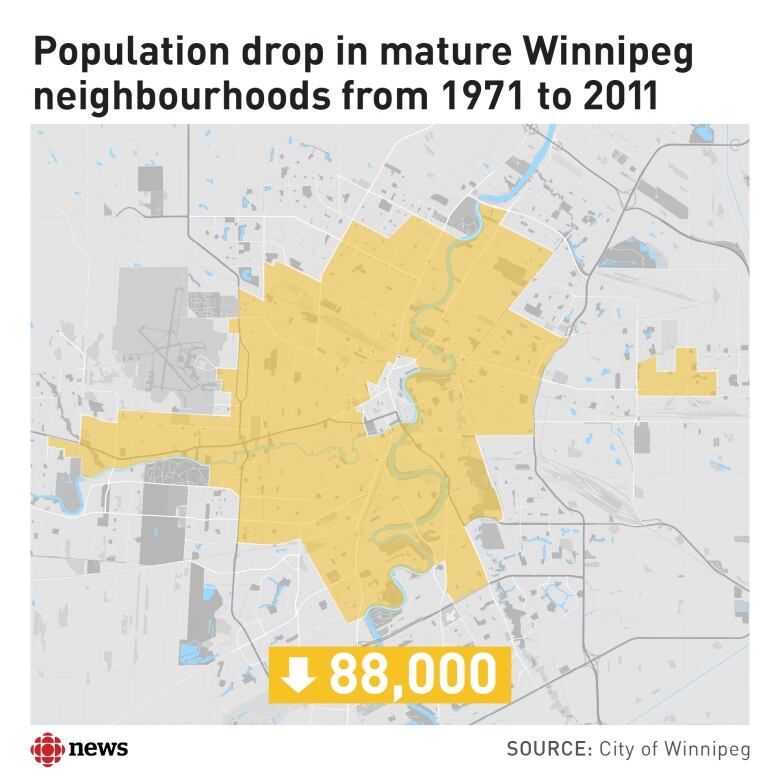Winnipeg vows no more 'skinny, tall & long houses' as part of new infill guidelines
City slated to require builders to cover less of a new lot when new housing rises in older neighbourhoods

Infilldevelopers in Winnipeg are expected to face new restrictions on how much of a lot a new home can coveras part of proposed guidelines for housing in older neighbourhoods.
On Monday, city council's property committee will consider a plan to phase in new infill-housing guidelines over the next three years.
One of the first changes involves a plan to eliminate infill thatcity land-use officials describe as "skinny, tall and long houses" that some residents of older neighbourhoods cited as eyesores when the city held public consultations about infill housing.
"One of the most frequently expressed concerns was related to modest bungalows being replaced by two long, narrow bi-level houses that fill up the lot, leaving no rear yard, no greenspace, frequently with a large secondary suite,"City of Winnipeg principal planner Kurtis Kowalkewrote in a report to council.
As a result, his office has proposed changes to the city's land-use bylaws this fall.
City council's new property chair supports the move.
"People aren't even necessarily opposed to [several] houses going in where there was one. They just have concern largely about how big some of these are, the way in which they're being constructed, and we candeal with that," said St. Vital Coun. Brian Mayes, standing on a block of Vivian Avenue that sports a mix of infill and older housing.

Mayessaid the No. 1 complaint in the northern portion of his ward involves the construction of infill housing after existing lots are split in two.
Fighting against lot splitting has become a mission for activists such as Gary Lenko, who has mounted successful appeals against subdivisions in Fort Garry's Maybankneighbourhood.
"There's no backyards now for kids. So we're basically throwing kids out of the neighborhood. Yes, there are individual houses they're fenced,but there's no yard. So what's the point?You might as well go live in an apartment block," said Lenko, who tried to unseat River Heights-Fort Garry Coun. John Orlikow in last fall's election.
The city has been trying to promote infill housing as a means to combat a population decline in older Winnipeg neighbourhoods, increase the population density in order to save money on infrastructure maintenance and collect more property-tax revenue on smaller lots.

Some residents of older neighbourhoods say the city must try harder to ensure infill developments resemble existing housing.
In Crescentwood, Joanne Seiff is concerned about modern structures rising next to character homes.
"You can definitely build infill housing that's sensitive to the needs of the neighborhood, if you have a 100-year-old neighborhood. It's nice that the infill looks something like what the neighbours' houses look like," she said.

Tim Comack, vice-president of Ventura Developments, called the ideamonotonous.
"I find that we spend a lot of time trying to protect and and maintain existing context and character and we don't focus enough on how we can actually transform a neighborhood to become more dense and more livable and become a better use of the actual infrastructure," Comack said.
Comack expressed concern the city will take three years to phase in its infill-policy guidelines, addingdevelopers are looking for the city to develop consistent rules for infill.
"You either want it or you don't," he said.













_(720p).jpg)


 OFFICIAL HD MUSIC VIDEO.jpg)
.jpg)



























































































